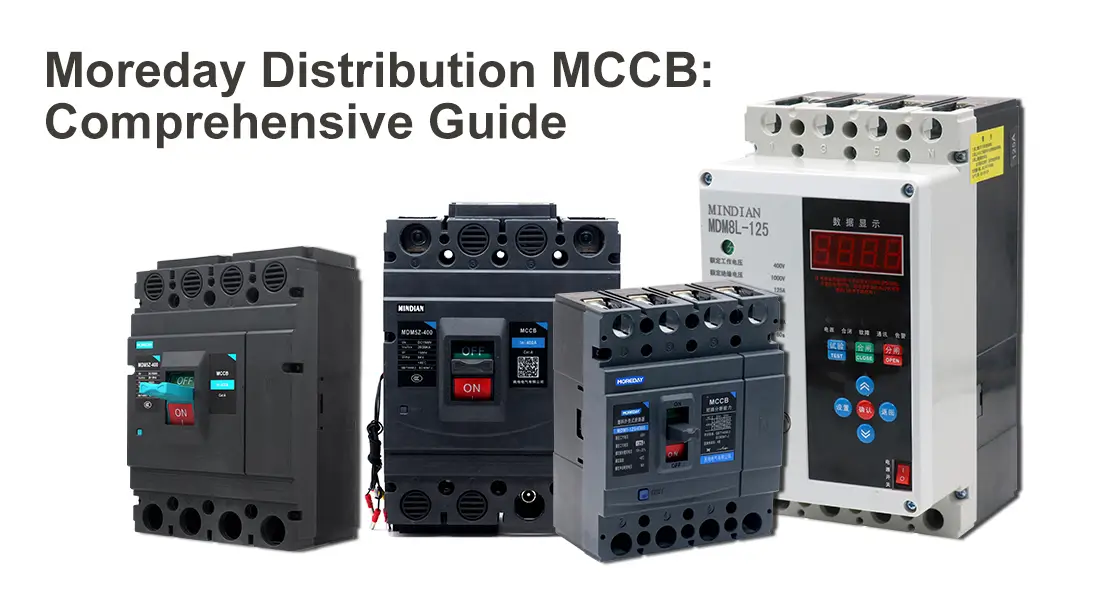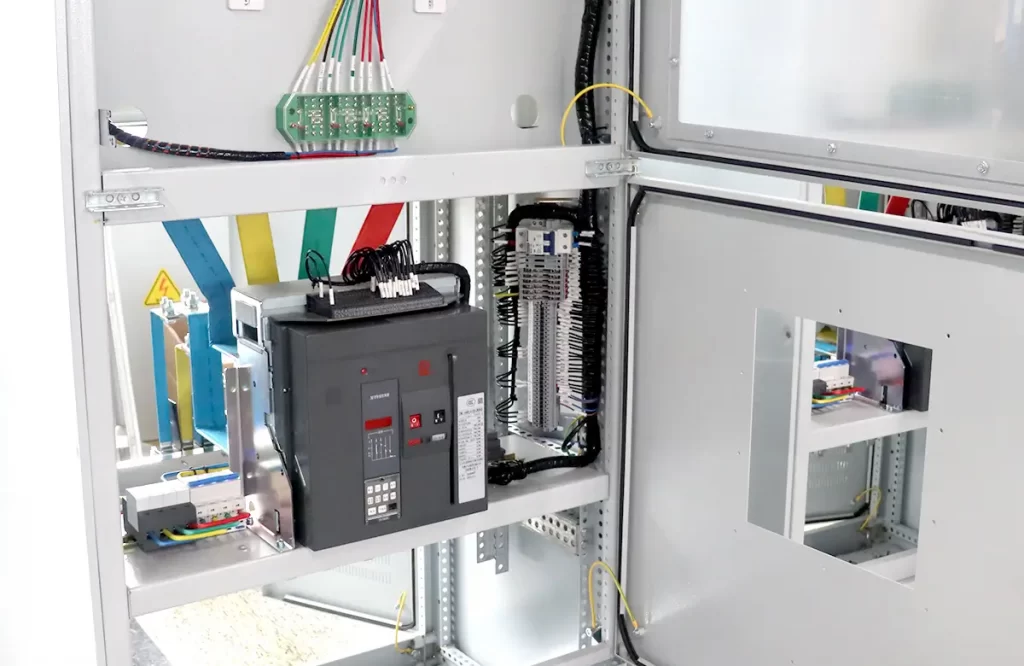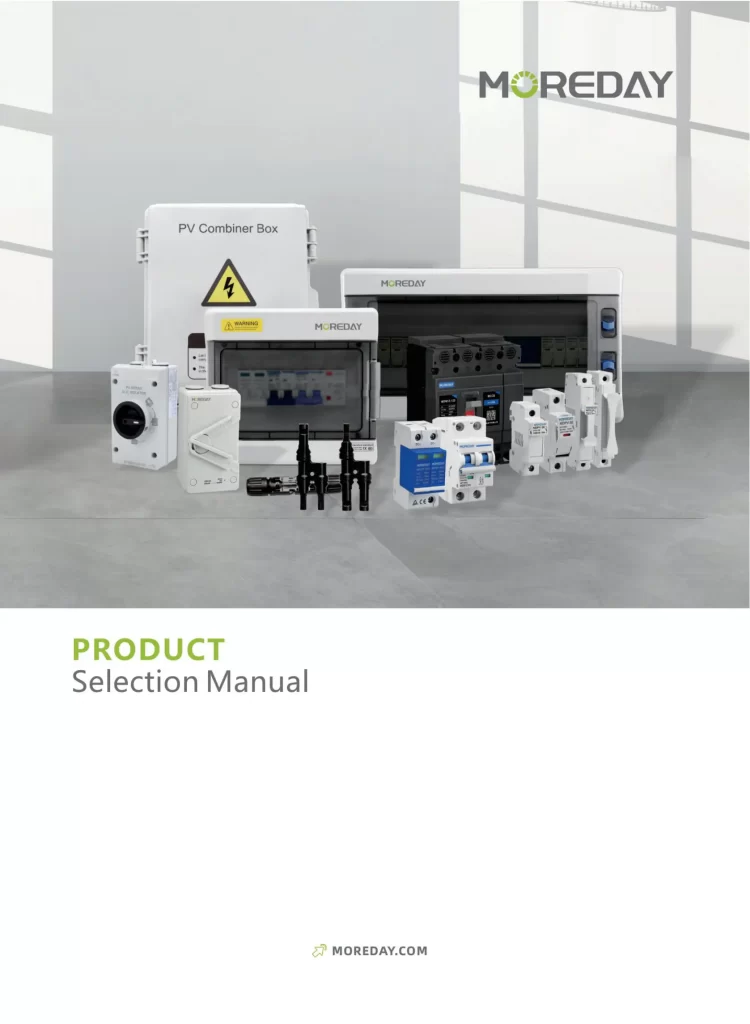Introduction
Embark on an enlightening journey into the realm of molded case circuit breakers with our detailed exploration. We’re set to unravel the complexities and nuances of these vital components, dissecting their roles, variety, practical uses, benefits, and key factors to consider in selection. This guide, tailored for homeowners, electricians, and industry experts alike, aims to equip you with the crucial insights necessary for making astute choices in the sphere of electrical circuit safety.
Molded case circuit breakers (MCCBs) are essential components in electrical power distribution systems, ensuring the safety and reliability of circuits in residential, commercial, and industrial settings. These versatile devices protect against overloads and short circuits, preventing damage to equipment and ensuring the safety of both people and property.
Throughout this guide, we will discuss the different types of molded case circuit breakers available, including economy, standard, high-performance, and current limiting breakers. We will also explore the various applications where MCCBs are commonly used, such as in residential homes, commercial buildings, and industrial facilities.
Additionally, we will highlight the advantages of using molded case circuit breakers over conventional breakers, including their higher interrupting capacity, adjustable trip settings, and enhanced reliability and durability.
Lastly, we will provide valuable insights into the installation and maintenance of molded case circuit breakers, ensuring that you have the necessary knowledge to safely and effectively incorporate them into your electrical systems.
So, let’s embark on this journey of understanding molded case circuit breakers and discover how they can provide optimal protection for your electrical circuits.
What is a Molded Case Circuit Breaker?
A molded case circuit breaker (MCCB) is an essential component of electrical systems that provides protection against overloads and faults. Unlike traditional breakers, MCCBs are designed with a molded case, which offers enhanced protection for the internal components and helps dissipate heat, ensuring optimal performance.
MCCBs are widely used in residential, commercial, and industrial settings due to their robust design and increased current carrying capacity. They are capable of interrupting current flow when a fault or overcurrent condition is detected, safeguarding the electrical circuit and preventing damage to the equipment.
These specialized breakers are available in various ratings, ranging from 30A to 6000A and higher, and offer different trip characteristics, such as instantaneous trip, short-time delay, long-time delay, or adjustable trip settings. This flexibility allows MCCBs to be customized according to specific application requirements.
In addition to their primary function of protecting against overloads and short circuits, MCCBs can also provide motor overload protection and ground fault protection. This makes them suitable for a wide range of applications, including residential homes, commercial buildings, factories, warehouses, and more.
When selecting an MCCB, it is important to consider factors such as the interrupting capacity, trip settings, and compliance with the National Electrical Code. Proper installation and maintenance, following the manufacturer’s instructions and consulting with a qualified electrician, are crucial to ensure the safe and reliable operation of the MCCB.
Overall, MCCBs offer enhanced protection, reliability, and durability for electrical systems, making them an essential component in ensuring the safety and efficiency of various applications.
Types of Molded Case Circuit Breakers
When it comes to molded case circuit breakers (MCCBs), there are several types available to suit different applications and requirements. These types include:
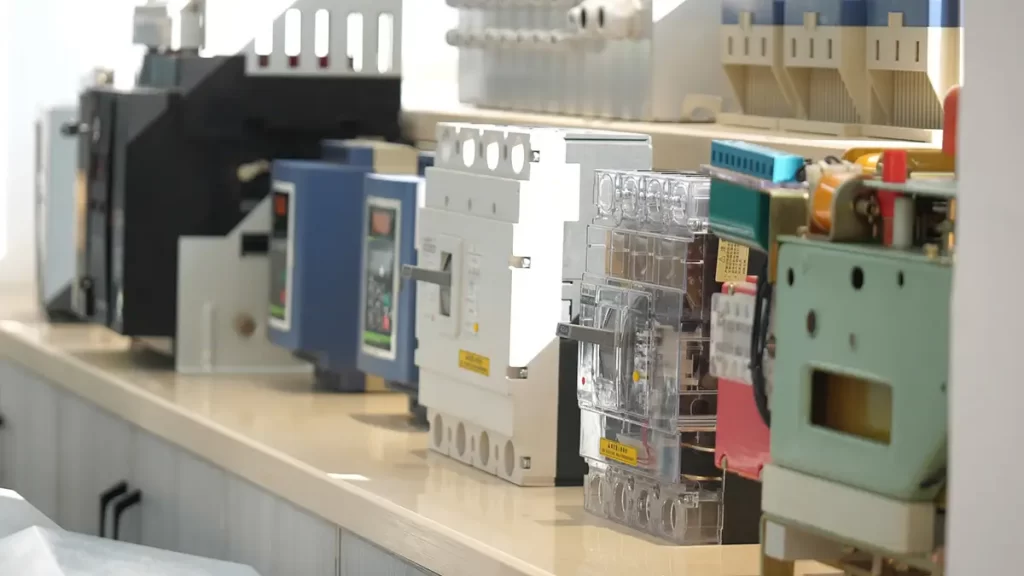
Economy MCCBs: These are cost-effective options that provide basic protection against overloads and short circuits. They are suitable for residential and light commercial applications where the load is not too high.
Standard MCCBs: These are the most common type of MCCBs and offer a balance between cost and performance. They provide reliable protection against overloads and short circuits and are suitable for a wide range of applications, including commercial and industrial settings.
High-performance MCCBs: These MCCBs are designed to handle higher loads and provide enhanced protection. They have a higher interrupting capacity and can withstand more demanding electrical conditions. They are ideal for heavy commercial and industrial applications where reliability and durability are crucial.
Current Limiting MCCBs: These MCCBs offer additional protection by limiting the amount of current that can flow through the circuit. They are designed to minimize damage in the event of a short circuit and are commonly used in applications where power interruption is not desired or tolerated, such as medical equipment and elevators.
Each type of MCCB has its own unique features and benefits, so it’s important to choose the right one for your specific application. Consider factors such as the load requirements, electrical conditions, and the level of protection needed to ensure the safety and efficiency of your electrical system.
Applications of Molded Case Circuit Breakers
Molded case circuit breakers (MCCBs) are versatile electrical protection devices that find applications in various industries and settings. Their robust design and high current carrying capacity make them suitable for a wide range of applications. Here are some common applications where MCCBs are used:
Industrial Sector: MCCBs are widely used in industrial settings to protect electrical systems from overloads and short circuits. They are essential for machinery and equipment protection, ensuring the safety and reliability of industrial operations.
Commercial Buildings: MCCBs are commonly found in commercial buildings such as offices, shopping malls, and hospitals. They provide protection for electrical systems, including lighting, HVAC units, elevators, and other critical equipment.
Residential Buildings: While conventional breakers are typically used in residential settings, MCCBs can be employed in high-current applications where standard breakers may not be sufficient. They offer enhanced protection for residential electrical systems, ensuring the safety of residents and preventing damage to appliances and equipment.
Renewable Energy Systems: With the increasing adoption of renewable energy sources such as solar and wind power, MCCBs are essential for protecting the electrical systems of these installations. They safeguard against overloads and short circuits, ensuring the efficient and safe operation of renewable energy systems.
Data Centers: MCCBs are crucial components of data center infrastructure, providing protection for critical electrical systems and equipment. They protect against power surges and ensure uninterrupted power supply to servers and networking equipment.
Marine Applications: MCCBs are also used in marine applications, where they protect electrical systems on ships and boats. They provide reliable protection against overloads and short circuits, ensuring the safety of the vessel and its occupants.
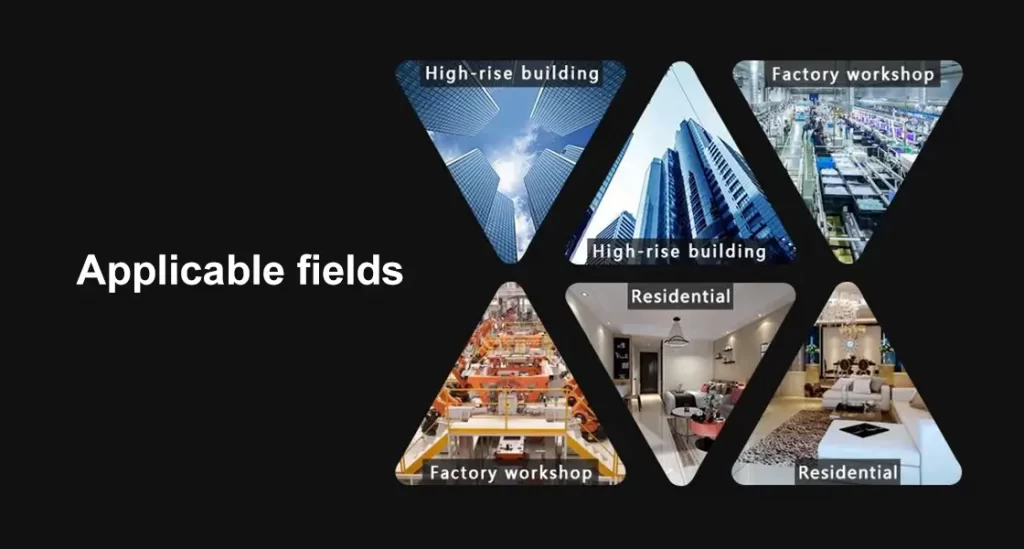
In conclusion, molded case circuit breakers have a wide range of applications across various industries and settings. Their robust design, high current carrying capacity, and enhanced protection features make them indispensable for ensuring the safety and reliability of electrical systems.
Advantages of Molded Case Circuit Breakers
Molded Case Circuit Breakers (MCCBs) offer numerous advantages over traditional circuit breakers, making them a preferred choice for many electrical systems. These advantages include:
Enhanced Protection: MCCBs provide superior protection against overloads and short circuits. The molded case design helps protect internal components from damage, ensuring reliable performance and preventing electrical system failures.
Higher Breaking Capacity: MCCBs have a higher interrupting capacity compared to conventional breakers. This means they can handle larger loads and provide better protection for electrical systems in industrial and heavy commercial applications.
Flexibility in Trip Settings: MCCBs offer adjustable trip settings, allowing for customization based on specific application requirements. This flexibility ensures optimal protection and prevents unnecessary tripping, reducing downtime and improving overall system efficiency.
Additional Safety Features: MCCBs often come with safety features such as trip indicators and current limiting capabilities. These features enhance safety by providing visual alerts and limiting the amount of current that can flow through the breaker, reducing the risk of electrical hazards.
Durability and Reliability: The robust design of MCCBs ensures durability and reliability, even in demanding environments. They are built to withstand high temperatures, making them suitable for a wide range of applications.
Overall, the advantages of MCCBs make them a preferred choice for industrial and heavy commercial applications where reliable and efficient protection is crucial. By investing in MCCBs, electrical systems can benefit from enhanced safety, improved performance, and reduced downtime.
Considerations for Choosing a Molded Case Circuit Breaker
When selecting a molded case circuit breaker (MCCB) for your electrical system, there are several important considerations to keep in mind. These factors will ensure that you choose the right MCCB for your specific application and meet the necessary safety requirements.
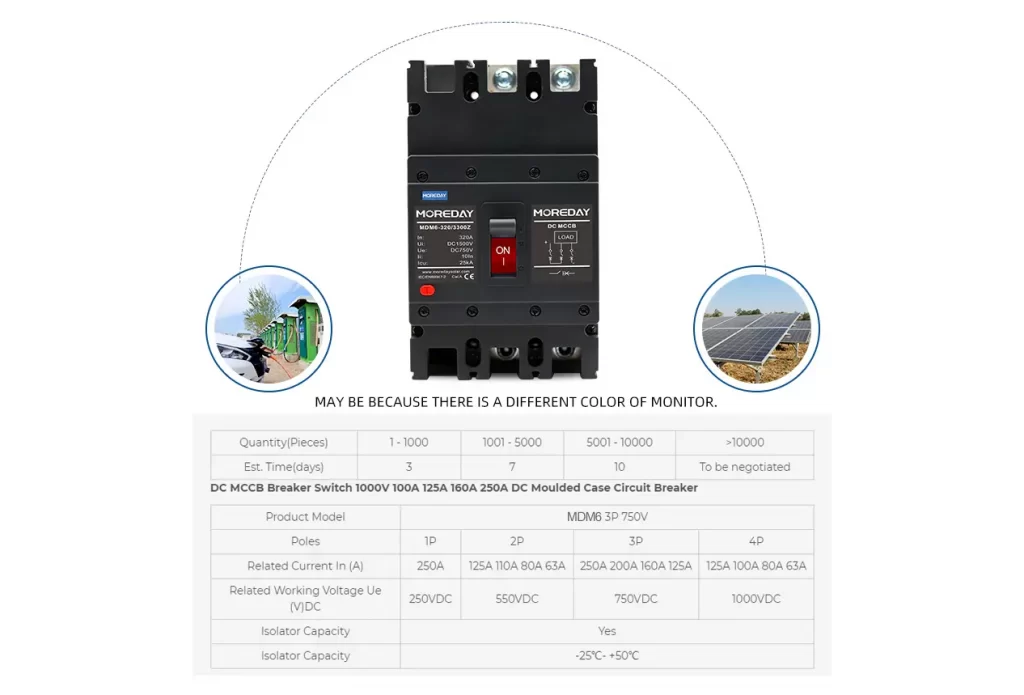
Current Rating: Determine the maximum current load that the MCCB will need to handle. This will help you select the appropriate MCCB with the right current rating to ensure reliable and safe operation.
Interrupting Capacity: Consider the potential short circuit current that the MCCB may need to interrupt. It is crucial to choose an MCCB with an interrupting capacity that exceeds the maximum short circuit current in your system to prevent damage and ensure safety.
Trip Characteristics: Different MCCBs have various trip characteristics, such as instantaneous trip, short-time delay, long-time delay, or adjustable trip settings. Consider the specific requirements of your application to select the MCCB with the appropriate trip characteristics for optimal protection.
Environmental Conditions: Evaluate the environmental conditions in which the MCCB will operate. Factors such as temperature, humidity, and vibration can affect the performance and lifespan of the MCCB. Choose an MCCB that is designed to withstand the specific environmental conditions of your application.
Additional Features: Consider any additional features or accessories that may be required for your application. These can include auxiliary contacts, shunt trips, undervoltage releases, or communication modules. Select an MCCB that offers the necessary features to meet your specific needs.
By carefully considering these factors, you can choose the right molded-case circuit breaker for your application, ensuring reliable and safe electrical protection. Remember to consult with a qualified electrician or electrical engineer for guidance and to ensure compliance with all applicable codes and regulations.
Installation and Maintenance of Molded Case Circuit Breakers
When it comes to the installation and maintenance of molded case circuit breakers (MCCBs), it is crucial to follow proper procedures to ensure optimal performance and safety. Here are some key considerations to keep in mind:
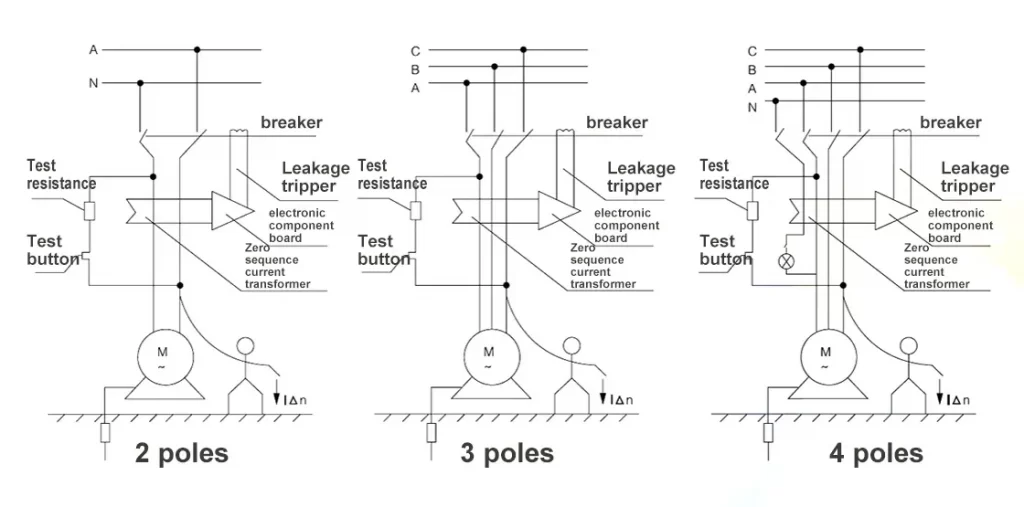
Qualified Electrician: It is essential to have a qualified electrician handle the installation and maintenance of MCCBs. They have the expertise and knowledge to ensure proper wiring, connections, and adherence to electrical codes.
Proper Tools: To safely install MCCBs, make sure you have the necessary tools on hand. These may include screwdrivers, wire cutters/strippers, pliers, a voltage tester, and gloves. Using the correct tools ensures accurate and secure installation.
Secure Connections: When installing a breaker into an existing panel, carefully check all connections to ensure they are secure and adequately insulated. Loose connections or damaged insulation can lead to hazards such as short circuits or electrical fires.
Inspection and Testing: Before turning on the power source, thoroughly inspect the MCCB and surrounding components to ensure they are in good condition. Test the breaker to verify its functionality and trip settings. Regular inspections and testing help identify any potential issues early on.
Manufacturer’s Instructions: Always refer to the manufacturer’s instructions for specific installation and maintenance guidelines. Each MCCB may have unique requirements and specifications that should be followed for optimal performance.
By following these guidelines and working with a qualified electrician, you can ensure the proper installation and maintenance of molded case circuit breakers. This will help protect your electrical system from overloads and short circuits, ensuring the safety and reliability of your equipment.
Derek Ke
Hey, I’m Derek Ke, the founder of Moredaydc.com, an expert in solar electrical products and ev charging.
In the past 15 years, we have helped 60 countries and nearly 500 customers (such as farms, residences, industrial and commercial) solve new energy and green power problems. This article aims to share more knowledge about solar electricity and new energy with everyone, so that green electricity can enter every home.
Common Queries
Frequently Asked Questions
please feel free to contact us.
A: MCCB is a type of electrical protection device that can be used for a wide range of voltages and frequencies of both 50 Hz and 60 Hz. The main distinction of MCCB is that it is enclosed in a moulded case.
A: MCCBs work by interrupting the continuity of electrical flow when a fault, such as an overcurrent or short circuit, occurs. This interruption helps prevent electrical fires and damage to equipment.
A: There are several types of MCCBs, categorized based on their interrupting capacity, operational mechanism, and application purposes. These include thermal-magnetic, electronic, and magnetic MCCBs.
A: Selecting the right MCCB involves considering the circuit’s voltage, current rating, and the interrupting capacity needed. It’s also important to consider the specific application and environment where the MCCB will be used.
A: While MCCBs are more commonly used in industrial and commercial settings due to their high current rating, they can also be used in residential applications, especially in cases where high levels of protection are needed.
A: The main difference is their capacity. MCBs (Miniature Circuit Breakers) are typically used for lower current ratings and are common in residential applications, while MCCBs handle higher current ratings and are used in industrial settings.
A: Regular maintenance of an MCCB includes visual inspection, mechanical operation tests, insulation resistance tests, and verification of tripping settings. This ensures reliable protection and longevity of the device.
A: Yes, most MCCBs are designed to be manually reset after tripping. However, it’s important to identify and resolve the cause of the trip before resetting the breaker.
A: Always ensure power is turned off before working on or near MCCBs. Use appropriate personal protective equipment and follow safety guidelines and standards to avoid electrical hazards.
A: Yes, MCCBs come in various sizes, which are typically determined by the frame size. The frame size relates to the maximum current rating of the breaker.
Make Electricity Available To All People

